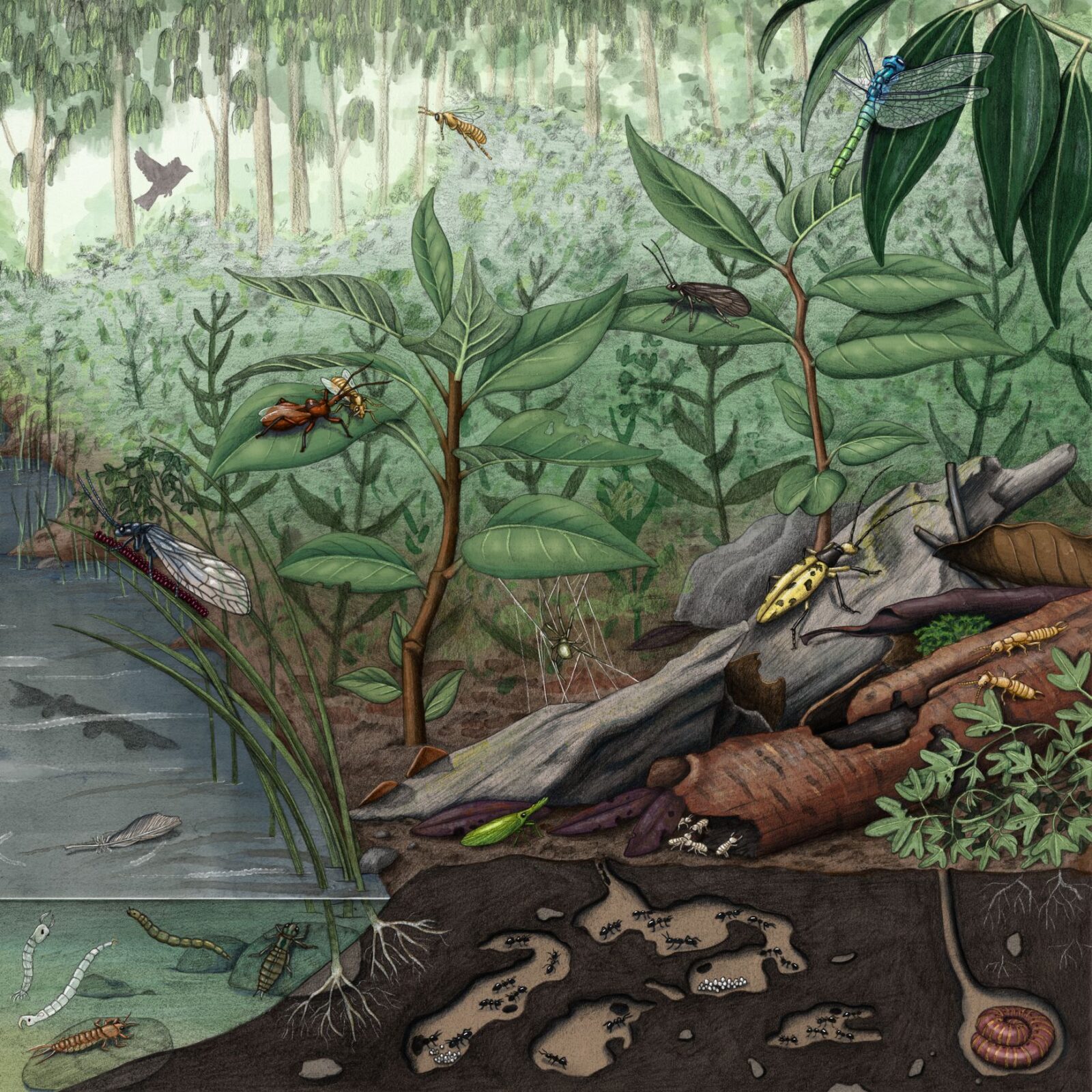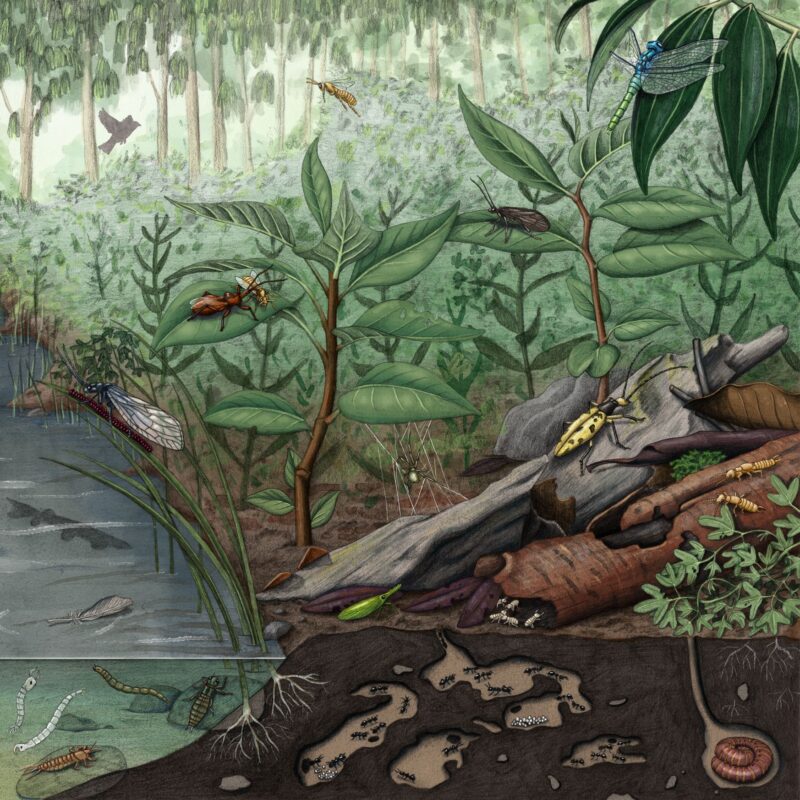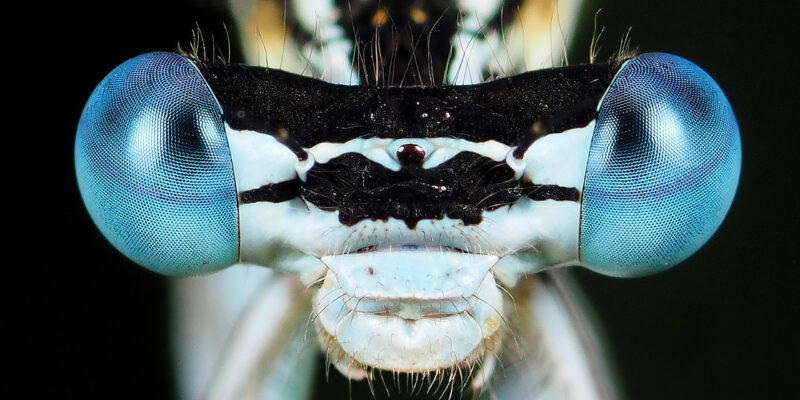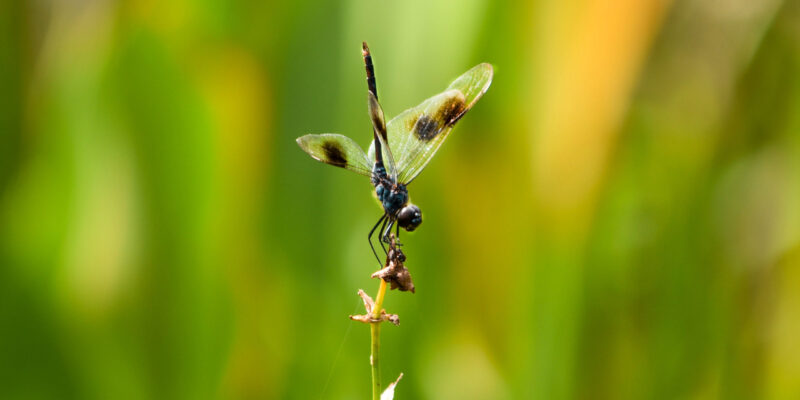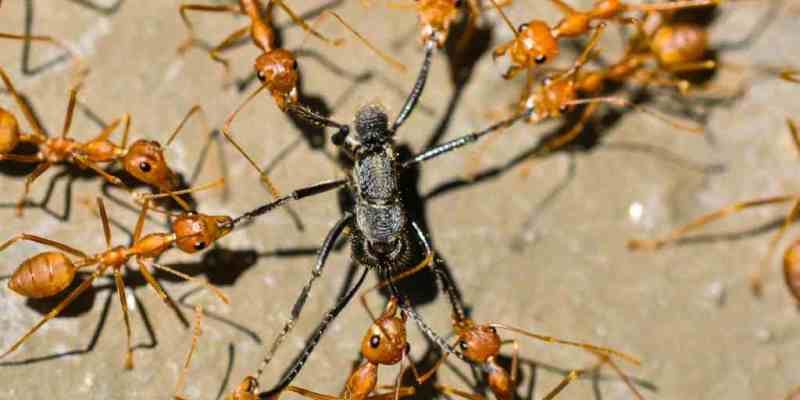A new exceptionally preserved sawfly fossil (Hymenoptera: Pergidae) and an evaluation of its utility for divergence time estimation and biogeography, the find is the first of its kind in Australia, and sheds new light on the co-evolution of insects and toxic plants.
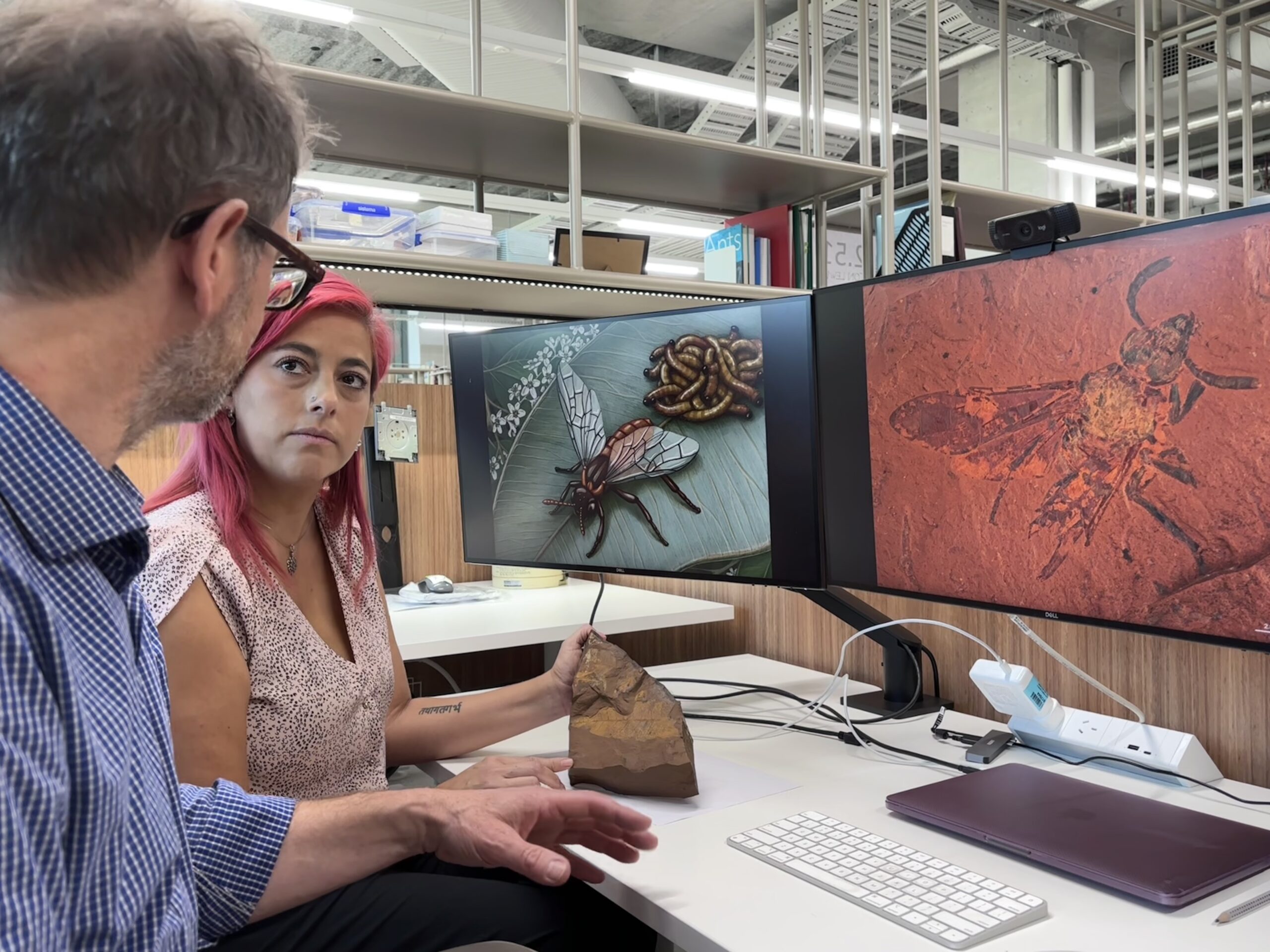
A team of Australian researchers has described a new species of now-extinct sawfly from an extremely well-preserved fossil found in central NSW.
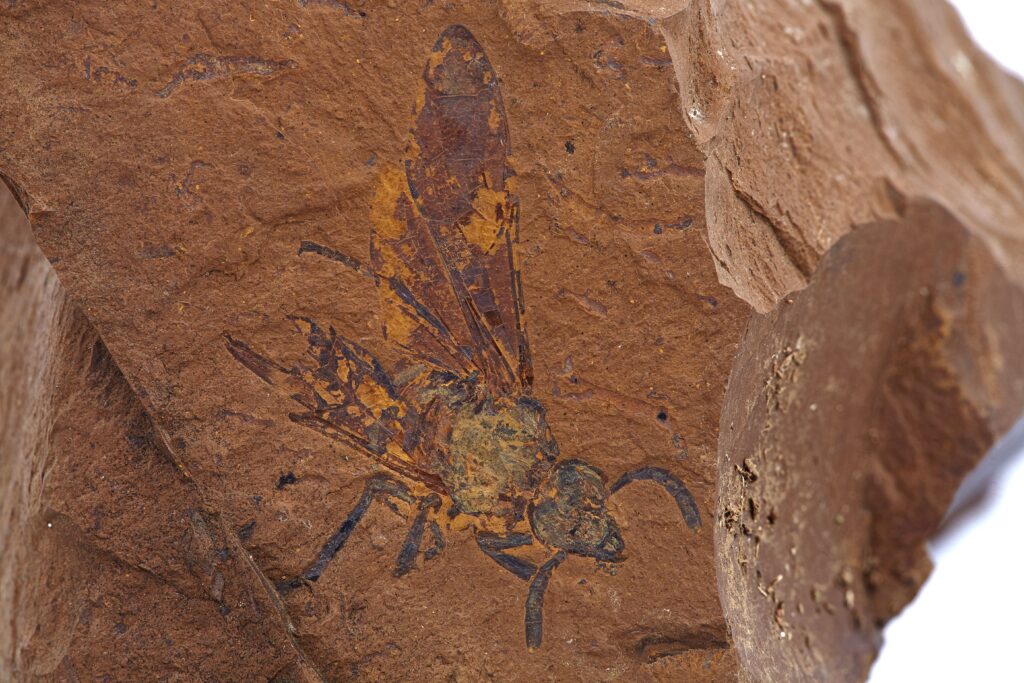
This fossilised sawfly, which is between 11 and 16 million years old from the Miocene Period, was the first of its kind discovered in Australia and only the second discovered in the world. It was found by a team of palaeontologists in 2018 who were exploring McGraths Flat, a fossil site in central NSW that has since yielded many other detailed fossils.
Photo © Michael Frese, University of Canberra. This ‘extremely well-preserved’ fossil details a new species of now-extinct sawfly.
Despite the name, sawflies are not flies but a type of wasp, with spitfires the most widely recognised group of sawfly species in Australia. They are called sawflies because they have a saw-like ovipositor that is used to lay eggs, and they could be mistaken as flies because they lack a typical ‘wasp waist’.
With the approval of the Mudgee Local Aboriginal Land Council, Wiradjuri words were used to name the newly described species of sawfly Baladi warru. ‘Baladi’ means ‘saw’ and ‘warru’ means ‘wasp’. This name honours the Traditional Owners of the lands on which the fossil was located.
Researchers from Australia’s national science agency, CSIRO, the University of Canberra, Australian Museum and Queensland Museum have analysed the sawfly’s wing venation and other features preserved in the fossil and determined its taxonomic (scientific naming) placement within sawflies.
This allowed them to describe it as a new species.
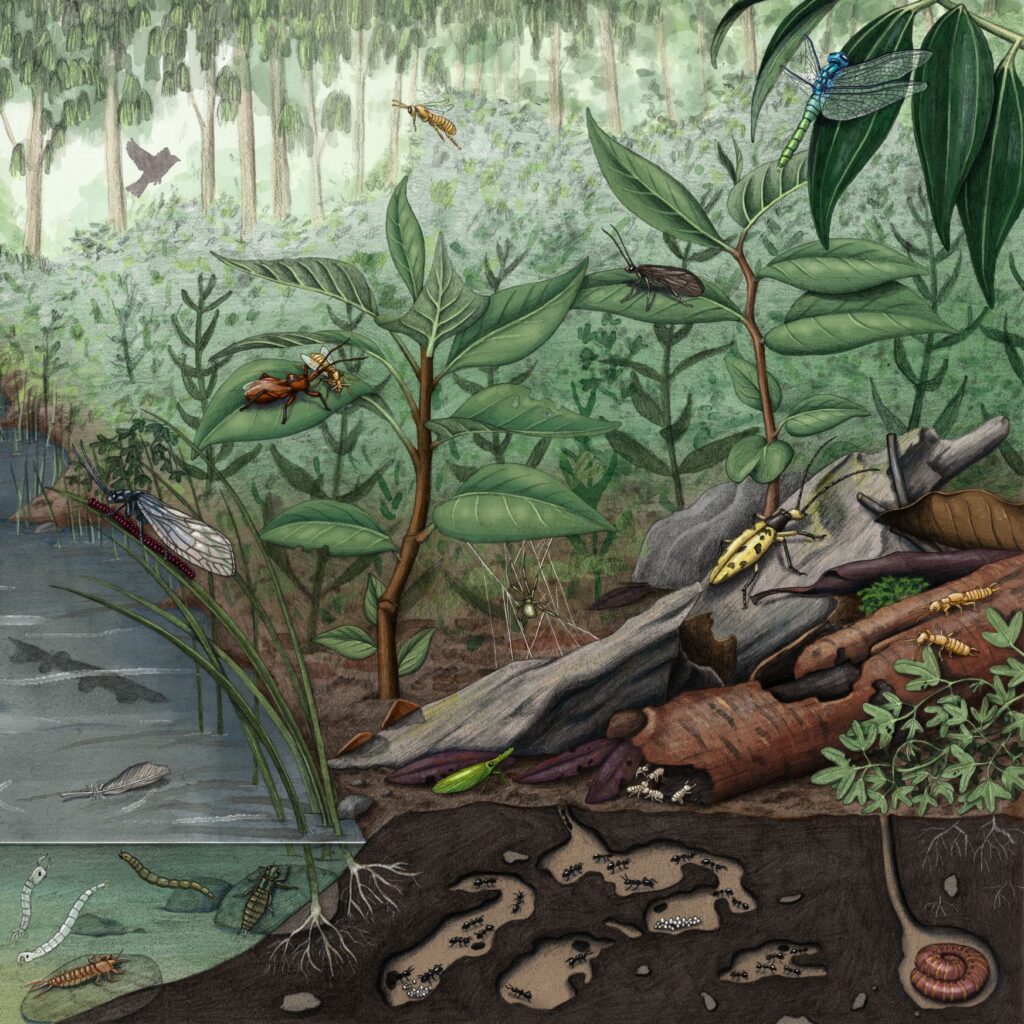
“We looked at the fossil and its morphology and then put this information together with molecular and morphological data from a wide sample of current sawfly species. This helped us decipher the fossil’s placement in the sawfly tree of life.
We used the fossil’s age and its placement to establish that sawflies originated in the Cretaceous Period, around 100 million years ago, which means their ancient ancestors lived in Gondwana. When this supercontinent split up, sawflies ended up distributed in Australia and South America.
When we examined the fossil, we identified pollen grains on the sawfly’s head which revealed it had visited a flowering Quintinia plant. This helped our team trace complex species interactions in the palaeoenvironment of McGraths Flat.”
– Dr Juanita Rodriguez, CSIRO research scientist
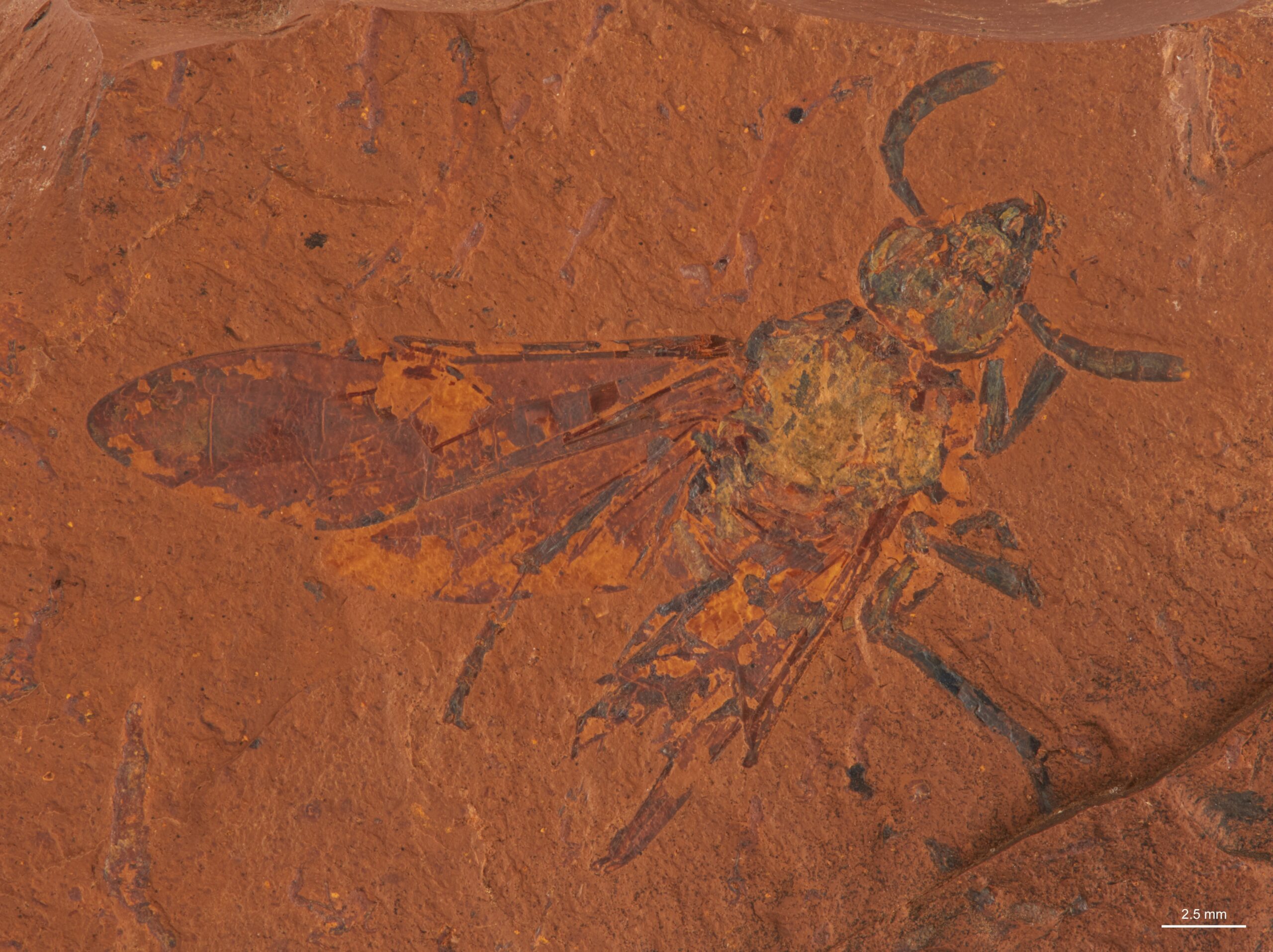
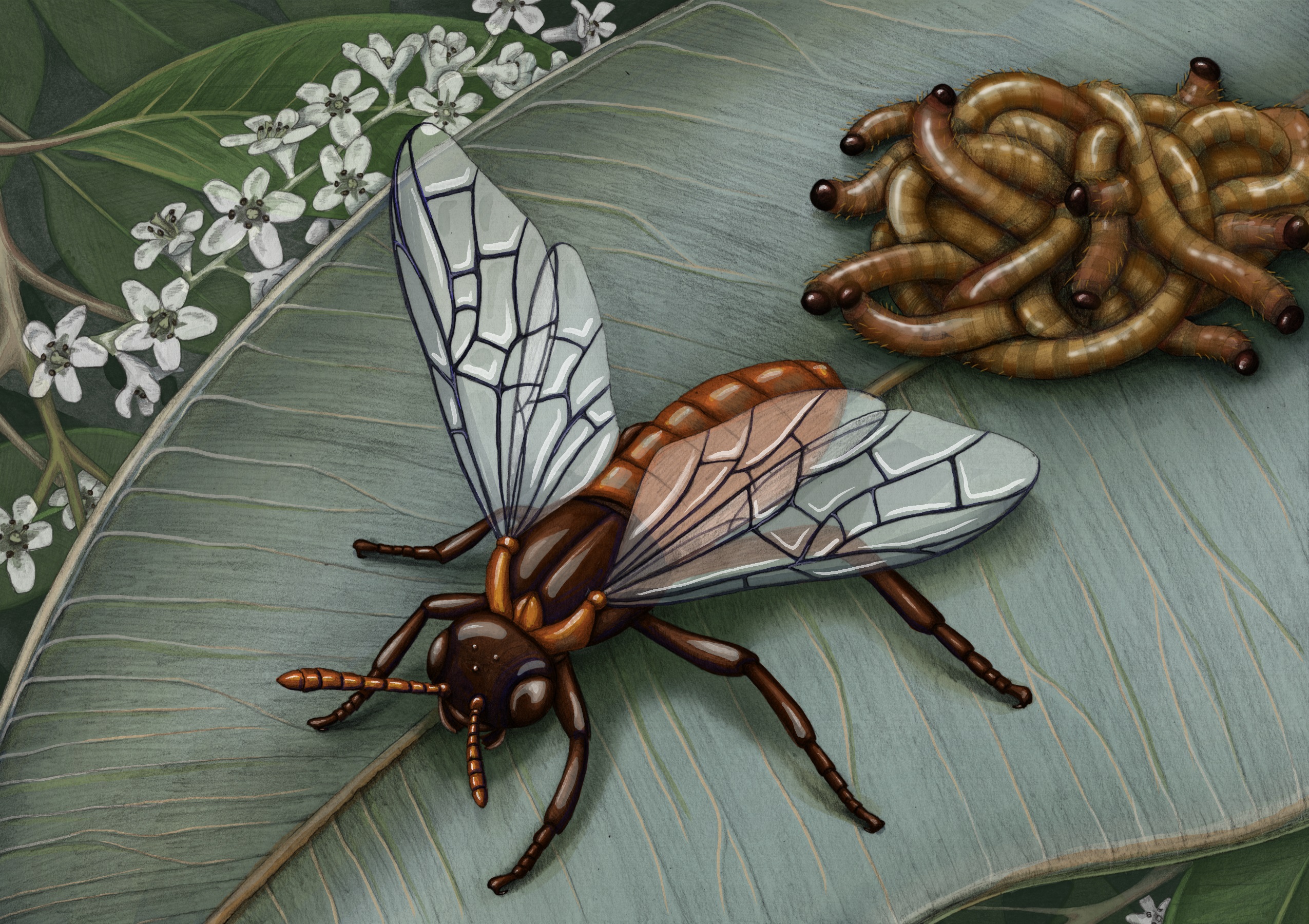
University of Canberra palaeontologist and CSIRO visiting scientist, Dr Michael Frese, who found the fossil sawfly, said this discovery would help researchers track evolution and distribution of sawflies.
“In particular, this find has helped us in understanding the incredible ability of sawflies to feed on toxic plants.
They eat the leaves of Myrtaceae – a family of woody plants that includes eucalypts – because they have mouthparts with which they can separate toxic oils or a chemical detoxification system inside their gut when feeding on myrtaceous leaves. This enables the larvae, sometimes called spitfires, to use the oils as a defensive weapon.
In terms of the bigger picture, our work is helping researchers make sense of their current distribution across Australia and the Americas.
Although this particular species, Baladi warru, has been extinct for millions of years, it provides information on native pollinators so we can understand their evolution and impact in the present.”
– Dr Frese
This research was published in the journal Systematic Entomology.


